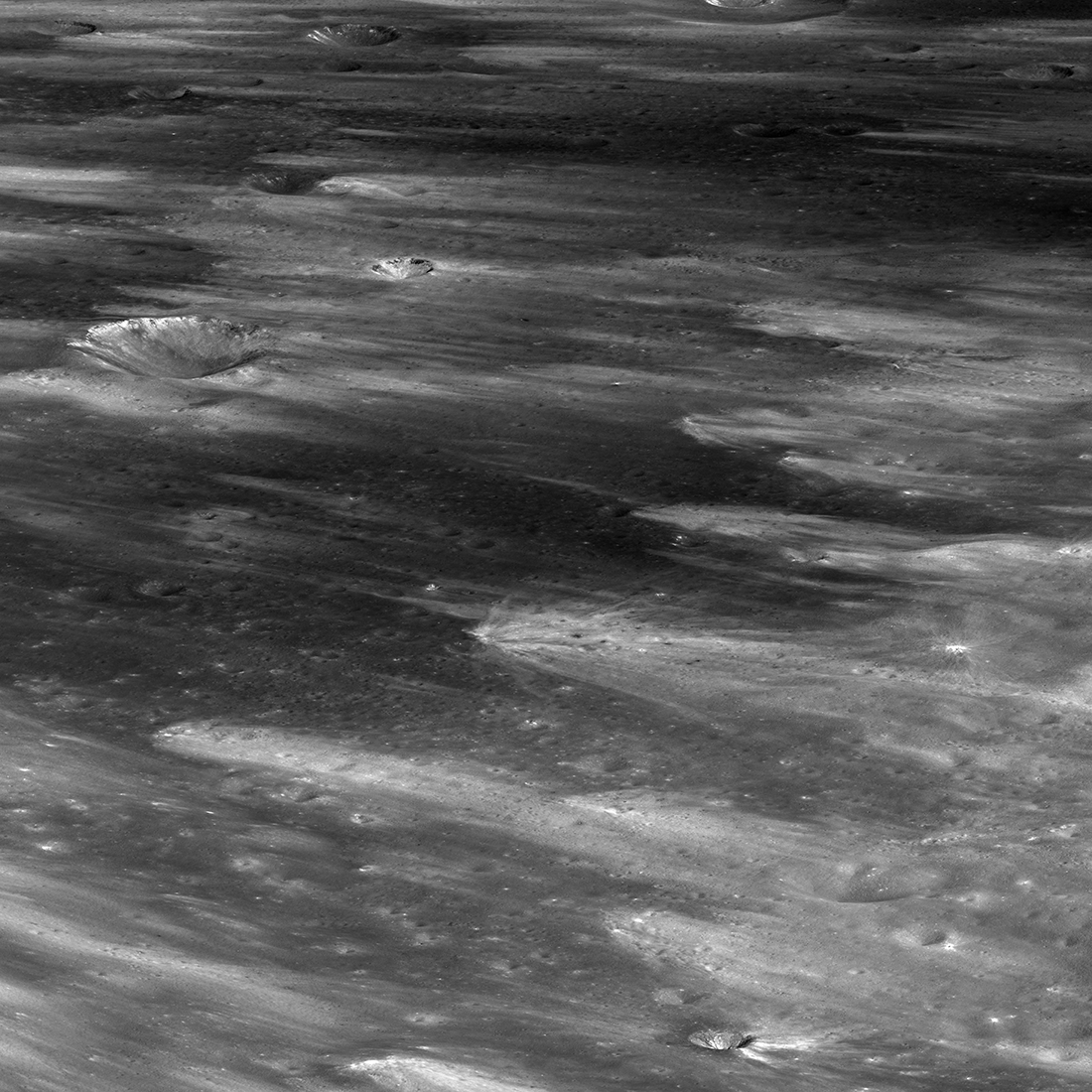
Rays are formed as material ejected from an impact event slams into the surface and churns up local material. Rays are bright because they expose fresh material from depth (both the incoming material and locally churned soil). What is fresh material? Over time the lunar surface is impacted by micrometeoroids and bombarded by radiation; both processes work to darken the surface. The dark "mature" layer at the surface is often only about 50 cm (20 inches) thick, so energetic impacts can easily bring up fresh material from the subsurface. Eventually, the bright rays darken and fade into the background as the surface matures.
In this image, you can see where the ejecta blocks from Giordano Bruno hit the surface, creating a secondary crater, which dug up local material and spread that bright material downstream (so to speak). Check out a nadir (looking straight down) view of the area at this link.
Related Featured Images
Published by Mark Robinson on 31 October 2022